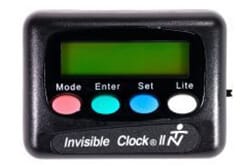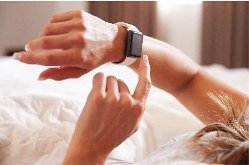Bedwetting is one of the most common — and misunderstood — childhood sleep issues. For parents, it can feel like a never-ending cycle of frustration, midnight laundry, and worry. Yet bedwetting isn’t a sign of laziness or bad habits. It’s a developmental stage that can be successfully managed with patience, understanding, and the right tools.
Among the most effective tools available today are bedwetting alarms — clinically proven to help children achieve dry nights naturally. However, success depends heavily on how the alarm is used. Even the best models, like the Chummie Premium Bedwetting Alarm or the Smart Bedwetting Alarm, can fall short if key steps are overlooked.
Let’s look at the most common mistakes parents make when using bedwetting alarms — and how to avoid them for faster, lasting results.
Mistake #1: Inconsistent Use or Skipping Nights
The most frequent reason bedwetting alarms don’t seem to “work” is inconsistency. Parents might use the alarm for a few nights, stop when there’s no immediate success, and restart later. But brain-bladder training relies on repetition. Each night is part of the learning process that builds a connection between the sensation of a full bladder and the act of waking up.
How to fix it:
-
Use the alarm every night until your child has 14 consecutive dry nights.
-
Even after initial success, continue for a few extra weeks to solidify the habit.
-
Avoid long breaks, even during vacations — portability makes modern alarms easy to carry.
Consistency is the single most important factor for success. With steady use, most children see significant improvement in 6–12 weeks.
Mistake #2: Improper Sensor Placement
Bedwetting alarms detect moisture through a sensor placed in the child’s underwear or on a pad. Incorrect placement can cause false alarms or delayed response.
How to fix it:
-
For clip-on alarms like the Shield Bedwetting Alarm, ensure the sensor sits flat and snug near the point of first moisture.
-
For wearable alarms such as the Chummie Premium Bedwetting Alarm, use the included Flex sensor — it’s designed to contour comfortably to your child’s underwear.
-
For wireless models like the Smart Bedwetting Alarm, double-check that both the transmitter and receiver are paired correctly and that batteries are fully charged.
A properly positioned sensor ensures the alarm triggers at the earliest drop of moisture — reinforcing the learning loop that leads to dryness.
Mistake #3: Expecting Overnight Results
Bedwetting training is a process, not an instant cure. Some parents stop after two weeks because progress feels slow, but the body needs time to adapt.
Remember — your child’s bladder capacity, sleep depth, and neurological signals are still developing. The alarm is teaching a new reflex, and that takes repetition.
How to fix it:
-
Expect progress within 4–6 weeks, with dryness achieved in 8–12 weeks for most.
-
Keep a progress chart — children are motivated when they can see their improvement.
-
Pair patience with praise. Celebrate each dry night and progress milestone.
You can learn more about realistic training timelines in our Bedwetting Resource Center — which offers detailed guides, troubleshooting tips, and parent success stories.
Mistake #4: Forgetting Emotional Support
Bedwetting is an emotional issue as much as a physical one. Children may feel embarrassed, frustrated, or even ashamed — especially if parents react with anger or disappointment. Emotional tension can make the process harder, as anxiety interrupts healthy sleep and bladder signals.
How to fix it:
-
Always reassure your child that bedwetting is normal and temporary.
-
Frame the alarm as a helper, not a punishment.
-
Encourage independence — let your child reset the alarm in the morning and track their progress.
Creating a safe emotional environment helps the alarm training process work faster. The goal isn’t just dry nights — it’s confidence, comfort, and restored self-esteem.
Mistake #5: Choosing the Wrong Alarm Type
Not every alarm fits every child. The wrong type can make the experience uncomfortable, frustrating, or ineffective.
There are three main kinds of bedwetting alarms:
-
Wearable alarms: Attach directly to pajamas or underwear and are best for light to moderate sleepers.
-
Wireless alarms: Feature a sensor in the underwear and a receiver placed on the bedside table — great for restless sleepers who dislike cords.
-
Pad-and-bell alarms: Use a moisture-detecting mat on the bed; perfect for older children or those who move frequently during sleep.
How to fix it:
Use our Compare Bedwetting Alarms page to understand differences between models.
For example:
-
The Chummie Premium Bedwetting Alarm combines sound and vibration for deep sleepers.
-
The Smart Bedwetting Alarm offers wireless comfort and a sleek modern design.
-
The Shield Bedwetting Alarm provides an affordable and compact solution for younger children.
Selecting the right alarm dramatically increases success rates and reduces frustration.
Mistake #6: Using Diapers or Pull-Ups During Training
Many parents continue to use pull-ups “just in case.” While understandable, it can slow down learning. Pull-ups absorb moisture before the sensor can detect it — meaning the alarm never gets the chance to signal.
How to fix it:
-
Switch to regular cotton underwear when using a bedwetting alarm.
-
Protect the bed with a washable waterproof pad instead.
-
Reinforce to your child that accidents are part of the process — and that every signal means progress.
A little extra laundry in the short term is worth the long-term benefit of permanent dryness.
Mistake #7: Not Understanding How Bedwetting Alarms Actually Work
Some parents treat the alarm as a gadget rather than a training device. It doesn’t stop bedwetting instantly — it teaches awareness.
When the alarm sounds, the child learns to wake, stop the flow, and finish in the toilet. Over time, this builds subconscious recognition of bladder fullness even before leakage occurs.
How to fix it:
-
Make sure both you and your child understand the alarm’s purpose.
-
Review the step-by-step instructions in the box and online at How to Stop Bedwetting.
-
Stay involved during the first few weeks to help your child respond correctly when the alarm triggers.
When used with understanding and consistency, alarms deliver long-term success rates that no medication can match.
Mistake #8: Giving Up Too Soon
The biggest obstacle isn’t the alarm — it’s discouragement. Progress might come slowly, and setbacks can feel demoralizing. But quitting early means the brain-bladder connection never fully forms.
How to fix it:
-
Remember that temporary regression is normal, especially after illness, stress, or schedule changes.
-
Keep encouraging your child and resume training as needed.
-
Stay patient; even small improvements mean the alarm is working.
If you’re uncertain whether you’ve chosen the right system, visit the Bedwetting Alarms collection for guidance on models suited to your child’s age and sleep habits.
Bonus Tip: Build a Bedwetting Success Routine
A structured routine helps families stay motivated and consistent. Try this proven nightly plan:
-
Encourage your child to use the toilet before bedtime.
-
Set up the alarm and double-check sensor placement.
-
Keep spare underwear and wipes nearby.
-
When the alarm sounds, calmly wake your child and assist them to finish in the toilet.
-
Reset the alarm and praise their effort — even if the bed is wet.
-
In the morning, mark the progress chart together.
This consistency turns the alarm into a trusted partner rather than an interruption.
Conclusion: Patience, Process, and Progress
Bedwetting is not a failure — it’s a stage of growth. Bedwetting alarms work because they teach awareness, not through punishment or pressure. With the right device, consistent practice, and supportive parenting, dry nights are achievable for nearly every child.
At One Stop Bedwetting, we’re committed to making that journey easier with products trusted by families and pediatricians worldwide. Explore our Bedwetting Alarms or visit our Compare Bedwetting Alarms page to find the perfect fit.
For deeper insights, browse our Bedwetting Resource Center or learn practical steps in How to Stop Bedwetting.
And for parents curious about the brain-bladder science behind success, read our companion article on Chummie’s blog — The Science of Sleep and Bedwetting: Why Chummie Alarms Work Better Than Willpower.
With patience, understanding, and the right tools, your family can look forward to peaceful nights and confident mornings — permanently.
Related Articles
Best Bedwetting Alarms for Deep Sleepers in 2025
Bedwetting Alarm for Kids – A Complete Guide for Parents
Back-to-School Checklist: A Parent’s Guide to Managing Bedwetting







 Our #1 Top SellerIdeal for Daily Use
Our #1 Top SellerIdeal for Daily Use Premium Quality BeddingSoft and Comfortable
Premium Quality BeddingSoft and Comfortable Premium Quality BeddingLarge Urine Absorption
Premium Quality BeddingLarge Urine Absorption AFFORDABLE PRICECHANGE DAILY AS NEEDED
AFFORDABLE PRICECHANGE DAILY AS NEEDED
 Sleek, Stylish and Affordable Watch
Sleek, Stylish and Affordable Watch Multi-Function Watch with Numerous Features
Multi-Function Watch with Numerous Features Recommended watch for teens and adults
Recommended watch for teens and adults Perfect for medication and other reminders
Perfect for medication and other reminders












You must be logged in to post a comment.